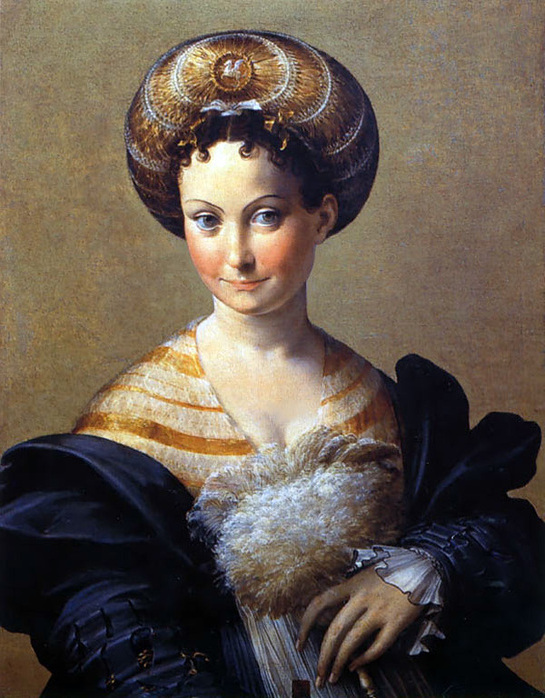Facts About Turkish Slave
Parmigianino's painting titled "Turkish Slave" is a captivating piece created around 1533. This Italian Mannerist masterpiece can be admired at the Galleria Nazionale di Parma in northern Italy. Interestingly, the painting's title originated from a misunderstanding: the headwear of the woman, initially thought to be a turban, is actually a noblewoman’s headdress known as a balzo.
In this artwork, the woman is elegantly adorned in a chemise and a guimpe, which is an elaborately sleeved dress. She holds a feather fan, enhancing her sophisticated appearance. Her attire comprises a white silk dress with gold stripes, an indigo blue satin overdress with large puffed sleeves, and an embroidered apron. The balzo on her head is embellished with a medallion depicting Pegasus, showcasing the fashion of noblewomen in the early 16th century.
Originally, the painting was part of the Uffizi Gallery collection until 1928, when it was exchanged for other artworks. It underwent restoration in 1968, revealing a uniform, earth-toned background. Some art historians, however, believe that Parmigianino might have intended for the background to be darker.
The woman in the painting is depicted with delicate features, including slender fingers grasping the plume of her fan. Her brown hair and eyes add to her graceful appearance. There is also an element of mystery surrounding her identity. Some speculate that she could be Giulia Gonzaga, painted around the time of her marriage to Vespasiano Gonzaga.

 San Marino
San Marino